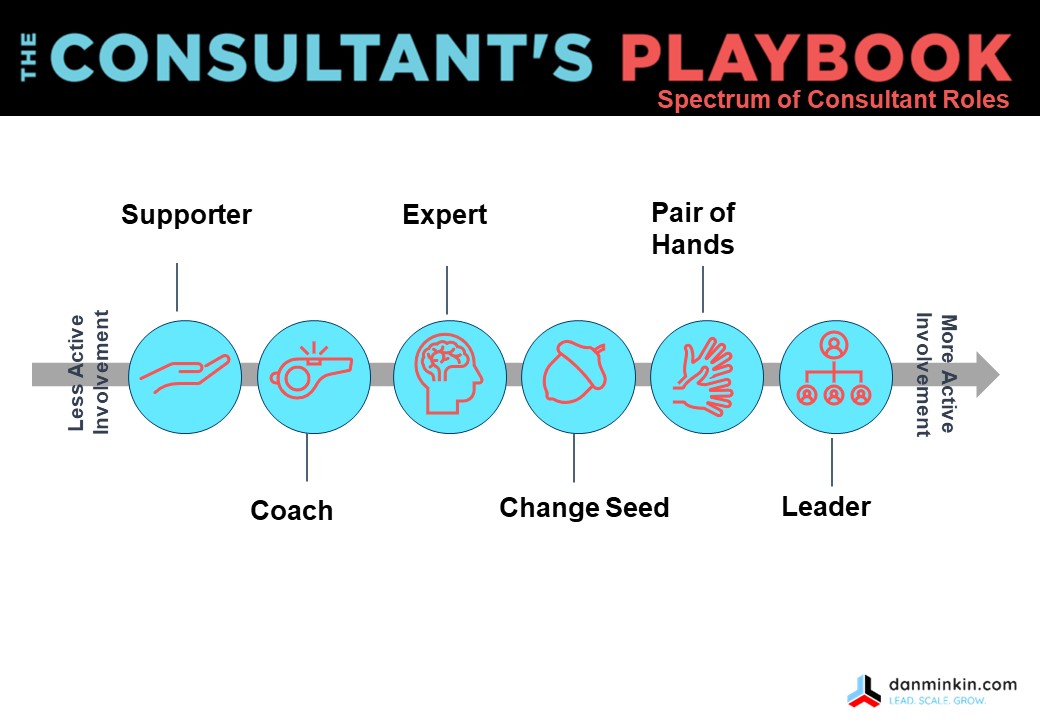Six Roles of a Consultant
At different times and in different environments, the same consultant needs to perform different roles for the good of their client. Sometimes this is several roles at once. The most successful consultants can adapt their behaviour to what the situation demands at that precise time. The following six roles are typical for a consultant to perform.
Supporter.
A consultant can act as a supporter, providing encouragement, confidence, and a sense of validation to the client.
Coach.
As a coach, through questioning and challenging, the consultant takes a more active role to help the client create and subsequently deliver their own solutions.
Expert.
As an expert, the consultant starts to become more prominent and has the chance to start influencing and persuading to achieve organisational change.
Change Seed.
As a change seed, the role becomes more explicit, and the client will sponsor or direct the consultant to perform activities that are designed to accelerate change.
Pair of Hands.
As a pair of hands, the consultant takes an active role in creating the solution and is a fully integrated part of the project or change team.
Leader.
As a leader, the consultant becomes as close to acting as a client manager as is possible, taking responsibility from the client for the delivery and successful outcomes. It is, however, unusual for a consultant to take this role and consideration is required before assuming such responsibility.
It may help to visualise these roles across a spectrum from one extreme point on a scale, where the emphasis is on the client to be the active party in the engagement (consultant as Supporter), to the other, where the consultant is the key driver (consultant as Leader). As the spectrum moves to the right consultant accountability also increases.


